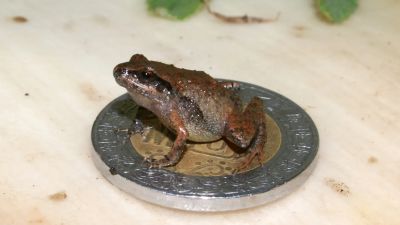'Miniature' frog species discovered by University of Cambridge scientists in Mexico

University of Cambridge scientists have discovered six new species of frog the size of a thumbnail in the forests of Mexico.
They are all smaller than a 1p coin, or about 15mm long when fully grown.
But the researchers warned that climate change and human expansion could threaten the miniature frogs' existence.
In comparison to the smallest frog species in the world, the new Mexico breeds are quite large; Paedophryne amanuensis, from Papua New Guinea, are even smaller, not even reaching 8mm in length.
Tom Jameson, a researcher at the University of Cambridge’s Department of Zoology, led the study and said: “Until now these new species have gone unnoticed because they’re small and brown and look really similar to other frogs.
“Their lifestyle is utterly fascinating.
“These frogs live in the dark, humid leaf litter of the forests, which is like a secret world - we don’t really know anything about what goes on there."
The new species are known as "direct-developing" frogs. Rather than hatching from eggs into tadpoles like most frogs, they emerge from the eggs as perfect miniature frogs.
Under threat
The research team has warned that the frogs are living in a precarious position because of habitat loss in the local area.
One breed in particular is under threat from the development of a mine.
"We named Craugastor rubinus after the garnet mines in the hillside where they’re found,” said Mr Jameson.
“Sadly, it will only take the expansion of one mine and these frogs could be gone.”
The frogs are also threatened by a deadly fungal disease, chytridiomycosis, that is wiping out amphibian populations across the world.
The researchers are hopeful the tiny frogs have a future, as areas in Mexico have been identified which can be protected.